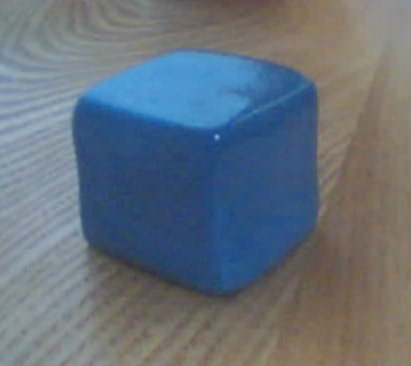Oobleck the dilatant
Evan Zabawski | TLT From the Editor October 2009
A unique fluid, not a forgotten historical figure.

A popular children’s toy demonstrates unique viscosity characteristics by flowing, bouncing and shattering depending on level of shear stress.
When teaching lubrication fundamentals, I often pose the viscosity-related question, “If you have a glass of motor oil and stir it with a large spoon, over time will it get easier, harder or stay the same?” I qualify that really I am only asking if the viscosity will decrease, increase or stay the same, given no other changes in pressure or temperature. The answer is tricky, since two out of three answers are correct.
If the motor oil is a Newtonian fluid, like a monograde SAE 40 diesel oil, then the viscosity would stay the same. However if the motor oil is a non-Newtonian fluid, like a multigrade SAE 5W-30, then it will actually get easier since the viscosity would decrease due to shearing. I usually go on to explain the benefits of this temporary shearing effect and contrast it against permanent shear, but recently I was challenged with the statement, “No, I have seen it demonstrated that it gets much harder and almost turns into a solid.” I responded by indicating that my question was about
time-dependent stress on a thixotropic fluid, and while the opposite could be seen in a rheopectic fluid, they had likely seen something else.
A common demonstration in high school chemistry classes of non-Newtonian fluids is to compare
shear-stress-dependent fluids. The teacher will show that ketchup or mayonnaise exhibits a high viscosity when still, but when shaken or stirred they will flow quite easily. These shear-thinning fluids are termed pseudoplastic.
Then the teacher demonstrates an opposite effect with some sticky, white fluid that pours easily, yet nearly solidifies when agitated violently. The contents of the bowl are only equal parts cornstarch and water, often referred to as oobleck, which is named after the sticky green stuff that falls from the sky in Dr. Seuss’
Bartholomew and the Oobleck. This shear thickening fluid is termed a dilatant.
Dilatants can make good body armor but not in the form of liquid-filled vests, which would be too heavy to be practical. Kevlar can be treated with a suspension of silica particles in polyethylene glycol diluted with ethanol; once the solution has permeated the Kevlar it is placed in an oven to evaporate the ethanol. The residual dilatant makes the Kevlar able to dissipate almost four times more energy without altering its flexibility.
Some all-wheel-drive vehicles have a passive traction control system that employs a viscous coupling unit, filled with a silicon-based dilatant, between the front and rear drive units. With good traction the wheels all turn at the same speed and the shear is low, but if the front wheels begin to slip the shear increases and more power is transferred to the rear wheels.
But the most popular form of a dilatant is polydimethylsiloxane (PDMS). PDMS is used in contact lenses, silicone caulk and adhesives and can be found in silicone greases, lubricants and antifoam agents. It also is called dimethicone, which readers should recognize as a popular ingredient in shampoo that lubricates and adds shine to hair.
The oddest application of PDMS came about by accident in 1943 when General Electric engineer James Wright was attempting to create a synthetic rubber for the war effort. He mixed boric acid and silicone oil to make dimethyl siloxane, added in some silica, castor oil derivative, glycerine, PDMS (to impart its unique viscosity characteristics) and titanium dioxide (for color).
What he found was a substance that bounced and stretched, didn’t collect mold and had a high melting temperature. Unfortunately, it didn’t have the properties needed to replace rubber. Advertising consultant Peter Hodgson introduced it to the world in 1950, and since then about 4,500 tons of it has been sold around the world. After he died in 1976, Crayola LLC bought the rights to his product and kept the name Peter chose from a list of 15 possibilities—Silly Putty.
 Evan Zabawski, CLS, is a training and consulting specialist for The Fluid Life Corp. in Edmonton, Alberta, Canada. You can reach him at evan@fluidlife.com
Evan Zabawski, CLS, is a training and consulting specialist for The Fluid Life Corp. in Edmonton, Alberta, Canada. You can reach him at evan@fluidlife.com.